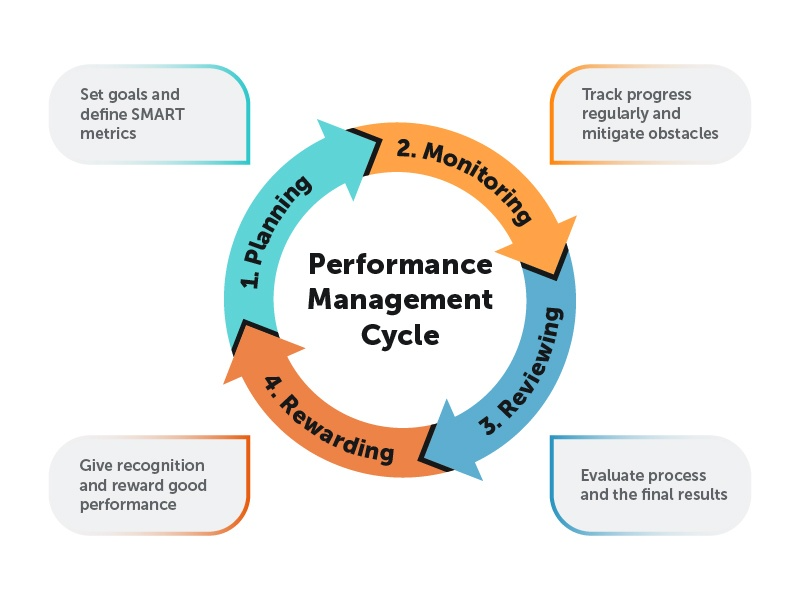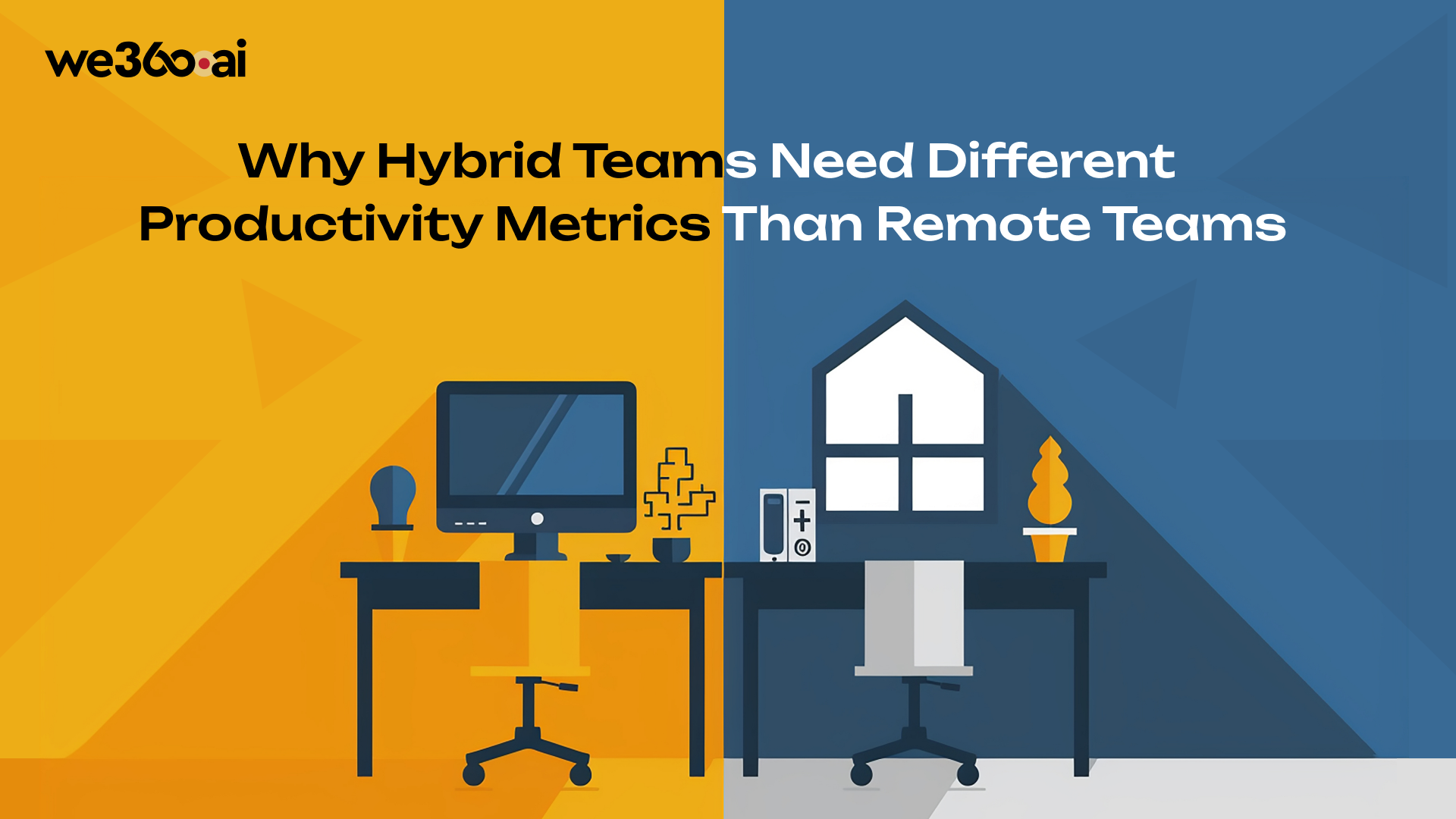Nobody likes a once-a-year performance review that feels like a box-ticking exercise. Employees crave feedback, recognition, and a chance to grow, not a surprise rating after 12 months.
For instance:
- Employees are 3× more engaged when they receive daily feedback vs. annual feedback.
- Companies that use continuous performance reviews are 44% better at retaining talent than those that stick to annual reviews.
- 85% of workers who have weekly check-ins with managers have higher engagement ratings.
This is where modern performance management makes all the difference. It’s not just about evaluating; it’s about creating a culture of continuous communication, goal setting, and development. When HR gets this right, performance management turns into a powerful tool that helps employees thrive and pushes the entire organization forward.
So, the next question is -
What is performance management?
Performance management is a process by which HR involves its employees and assesses their performance to improve overall organization’s growth.
It includes continuous progress review, real-time feedback, frequent communication, training employees to improve performance and rewarding dedicated employees.
Here’s what a Redditor had to say about performance management:

With performance management, HR managers set clear expectations and employees know what is expected of their jobs. It makes the employee take ownership of their roles and be accountable. This can be achieved through performance management cycle.
Let’s understand it better.
What is performance management cycle?
Performance management cycle is a subset of performance management process that allows management and employees to reach organizational goals through collective employee development.
It is shorter and a four-step procedure of planning. They are:
- Planning
- Monitoring
- Reviewing
- Rewarding

This structure can be followed annually; however, many organizations have benefited from using this more frequently.
Components of performance management
Performance management is an ongoing process that cannot be pinned down to a single day.
A few components of performance management are:
Continuous communication
You must have direct communication with your subordinates to check up on them. An effective performance management system in your organization comes from continuous communication. It's good to know what your direct reports are doing and help them if they feel stuck.
Goal setting
Planning is a pivotal part of performance management. Your employees are motivated if they have complex goals driving them to upskill and stay alert. These goals are not restricted to individuals; they may also work better if you have departmental goals. A performance management system without goals does not contribute to organizational success.
One popular methodology to set goals is SMART.
- Specific - Clear and focused
- Measurable - Trackable with numbers or criteria
- Achievable - Realistic and possible to attain
- Relevant - Aligned with broader objectives
- Time-bound - Set within a deadline
Reviewing performance
Managers provide feedback to their employees on an annual or quarterly basis. The employees self-evaluate themselves and the report is sent to managers. A new aspect of performance review is 360-degree feedback. Here, the employees rate their managers and help them improve. Rating one’s manager is complicated, but once it’s adapted, overall team productivity spikes.
Assessing at-par performance
When your employees perform good, you can reward them to boost their confidence. Similarly, when employees’ performance is sub-par, you can train them and ensure they overcome bottlenecks, if any.
Feedback
Once the manager has evaluated their employees, they give ratings like ‘good performance’ or ‘needs improvement.’ By giving them rating, managers ensure the employees are well-informed about their performance and take remediation measures. As per studies, employees who receive regular feedback to improve their performance are more driven to meet organizational success.
To manage performance better, follow these best practices:
Performance management best practices
Your HR managers can use these performance management best practices to aid employees in sharpening their skills:
- Define a blueprint for assessing performance: Identify a performance management framework that fits your goals. E.g., implement a 360-degree review to assess personal development and management by objectives (MBO) to evaluate your superiors.
- Create an optimistic aura: Instead of leaving employees with negative feedback, foster an environment of learning. Your employees must be encouraged to speak in necessity and maintain goodwill and empathy.
- Upskill managers: Managers are instrumental in performance management. Their feedback can influence the overall performance and morale of employees.
Managers can be taught effective communication techniques, emotional intelligence, and coaching strategies. Transforming your managers from an evaluative role to a developmental role can boost your team’s morale.
- Be consistent: Drive short internal meetings to maintain an employee connection. So that when annual or quarterly feedback is given, employees can digest the feedback.
A pivotal tool is needed that sees through all this and spikes employees' performance.
Enter we360.ai: boost your employee productivity with performance management
We360.ai is a workforce analytics and employee monitoring platform, powered by AI, designed to give organizations visibility into work patterns, productivity, attendance, and other key operational & HR metrics.
Feature
Productivity Benefit
Real-time analytics & visibility
Managers and employees can spot performance gaps or bottlenecks early (rather than waiting until the end of a quarter/year). This enables quicker interventions, so productivity loss is reduced.
Goal & Benchmark tracking
By setting goals, tracking them vs benchmarks, teams know what “good performance” looks like, which increases clarity, accountability, and motivation.
Monitoring idle vs active work
Understanding idle time, application usage, etc helps to identify unproductive patterns. Then HR or managers can coach, train or support to reduce waste.
Predictive notifications
If risk of burnout or attrition is spotted early, steps can be taken (e.g. redistribution of work, adjusting deadlines) to prevent dips in productivity or losing valued employees.
Workflow automation & optimization
Removing redundancies and reallocating resources means employees spend more time on high-value work rather than repetitive, tedious tasks.
In order to gauge your employees’ performance you too can adopt we360.ai in your strategy.
Don’t miss a day, book a FREE demo with we360.ai now!














